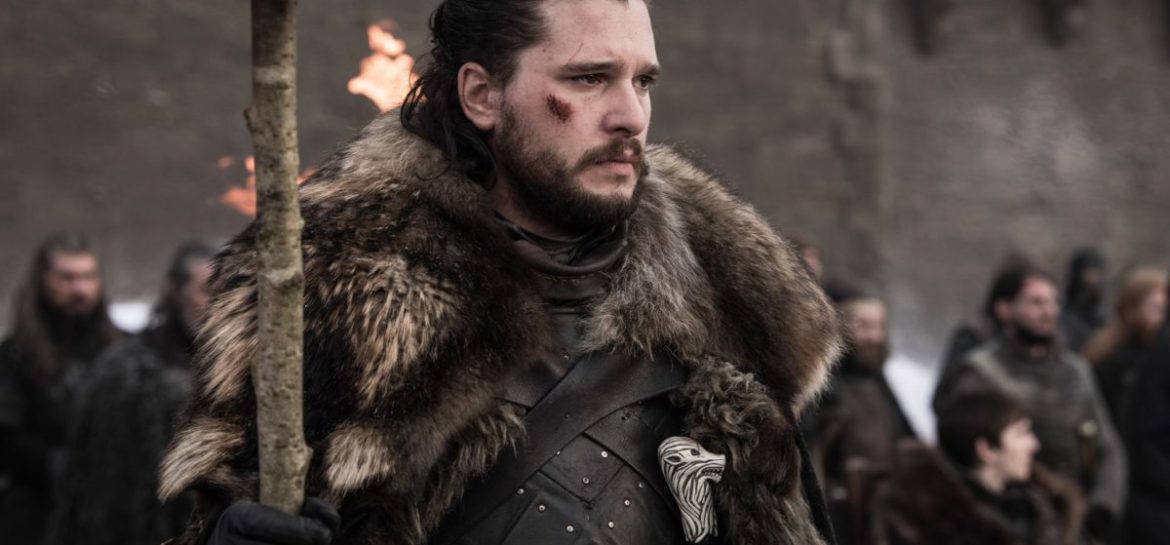
I presume that I’m not the only one who watched the start of episode 4 of this final season of Game of Thrones, and as the emotional memorial of the dead took place, and we said goodbye to some of our favourite heroes, turned to their partner and said solemnly, “Those are some efficient pyre constructions there”…
As we know, I’m a big fan of GoT – I even use it in my teaching and take valuable leadership lessons from it (for example, I am pretty sure my L&T budget would be substantially larger if I went into meetings with Finance riding a fucking dragon) – but I also do a lot of research on burned bodies. It’s rare to have a piece of popular culture that combines the two in the way that GoT does.
Anyway (spoilers ahead), after the Battle of Winterfell and the Night King got stuck with the pointy end, our victors had to deal with the massive pile of dead bodies. Just in case the Night King and his magic hadn’t been defeated, they decided to burn all of the bodies. So the episode begins with this ceremony. And it’s a useful way of highlighting that when we say ‘cremation’ we’re actually referring to a whole process rather than just the burning of the corpse. The preparation of the bodies, the construction of the pyre, the rituals associated with readying the dead and then lighting the wood are all part of the process called ‘cremation’. But here, because the Northern Army had no discernible tactics, there were a lot of dead bodies.
Do you know what happens to bodies when they are burned? Why would you. Unless you’ve read my book. So if you don’t know what happens to a body when it’s burned, I have to ask why you haven’t read my book. I mean, it’s on Amazon and everything. Seriously. Look, here’s the link… To tide you over until your new book order arrives, I’ll just briefly say that the soft tissues desiccate and shrink, eventually revealing the skeleton which itself undergoes significant heat-induced change including shrinkage, crystal change and fragmentation. The key thing is that the body does not just disappear. Burning is an efficient process for transforming the body, but it doesn’t destroy it. Which means that there is a lot of burned bone left following this event. If we think about weight for a moment (and I mean skeletal weight and not this holiday weight I still can’t seem to shift despite the utter lack of exercise I do…), research has shown that an adult body can leave between 1000g and 4000g of bone behind. It’d be considerably less for Lyanna (I’m sorry – is that still too soon..?). People have tried to use the weight of burned bone to give an indication of the number of people present, biological sex and age-at-death. As Goncavles et al note in their 2015 chapter:
…the use of cremation weight to draw bioarchaeological inferences has one main advantage – fragmentation does not seem to interfere with its analysis. Weight stays pretty much the same whether the skeleton fragments into 200 or 2000 pieces.
The results from Goncavles et al’s (2013) earlier detailed experimental study show the effect of collagen within the bones at the point of burning, but also that the sexual dimorphism present in skeletal size in life, remains after burning.
The cremains from fresh cadavers were significantly heavier than the ones from dry skeletons regardless of sex and age cohort. As expected, males were heavier than females and age had a powerful effect in female skeletal weight.
There has even been attempts to relate living body mass to skeletal weight (May, 2011):
Regressed in conjunction, body mass, sex, and age contribute approximately 67% of all variation observed in cremation weight
But while there is some correlation between these variables and weight, this is complicated by incomplete recovery of the remains and a lack of population specific data.
Now, a quick Google tells me that the Northern Army was conservatively around 120,000 strong. Lets assume that half died in battle, that the pyres worked as intended and reached around 800°C, and that we’re pooling ages and sexes – we therefore have an average weight of 2260g per body (based on averaged data from the literature), this gives us a total mass of 135,600kg to process. That’s the equivalent of an entire blue whale! Or 2,260 aardvarks! Or 135,600 guinea pigs! Who’s going to collect all of those remains? Not Jon Snow, oh no, he’s left for the south. It’ll be some poor schmuck who barely survived the battle and has now been told to grab a shovel. And where’s he going to put all the burned bone? Will there be a collective memorial of some sort? Who knows. For all it’s focus on dealing with the ramifications of politics and power, it conveniently overlooks the practicalities of dealing with the dead.
And don’t get me started on where they got all those logs to make the pyres so quickly. It was basically the next day. This is probably the most unrealistic thing in the whole series…